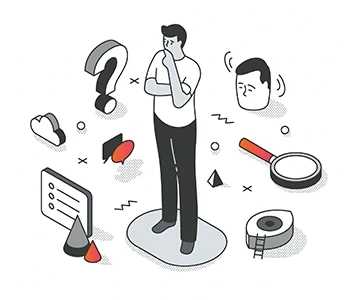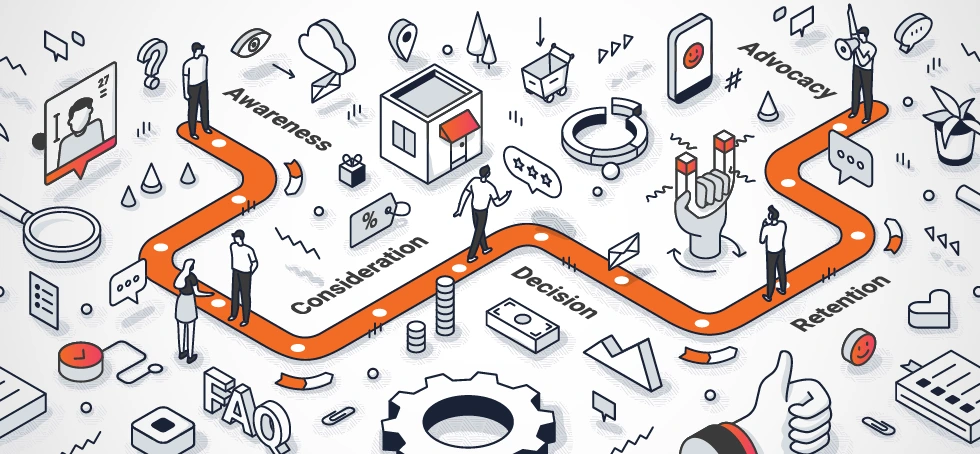Well, this is hard to determine exactly, but the average American receives an estimated 5,000 advertising messages a day. Some research says it’s 3,000 and other sources say it’s 10,000. Let’s not quibble. It’s an astonishing number and we can all agree that if you do “win” an inquiry from one of your ads, it’s quite an accomplishment.
You may have won the battle by finally getting someone to click on an ad of yours, complete a lead form, or even make a phone inquiry; but know that the war for a sale is far from over.
This is where truly understanding your buyer’s journey is crucial to completing the sale: What steps do they take, what decisions do they make, what do they think about and do to really seal the deal?
Whenever I ask product and marketing managers what the journey is like for the buyers of their product or service, I inevitably get different answers. Often, vastly different. Guess what: All of them are right and all of them are wrong. There is almost never just one journey.
Journey Mapping
You need to do a journey map.
Yes, journey mapping can be a frustrating and tedious process. But I’ve never completed one where I did not find value from the effort.
You may easily chart out the contractual steps a buyer has to make, but under those steps are a multitude of decisions they need to consider in order to take those actions. Realize, too, that when they do fall off — and some loss is inevitable — your cost per sale (as determined by the conversion of a lead to a sale) will continue to increase.

The more considered or complicated the product, the more deliberation will take place in the consumer’s mind. Whenever you can answer those unspoken questions consumers have, the better you will do. For example, our company does a good bit of work in the retail lending and insurance space, and by journey mapping, we were able to address some friction points where we noticed drop off.
Mortgage
80% of mortgage holders escrow for taxes.
Many consumers, we observed, stopped completing a lead form as soon as we asked about their escrow account. Evidently, even asking about this caused concern since we assumed many homeowners didn’t know that we could help them with the transfer of that account, all the while making sure they did not miss a tax payment or incur a penalty. Once we developed specific language on the lead form telling them that it will be easy to manage that account, conversions improved.
Life Insurance
Sure, there are far sexier and glamorous products and services, but I guarantee you none more inevitable.
With final expense life insurance, for example, the most common benefit amount we sell is $10,000. In virtually all of our lead efforts, we are quick to point out what the average cost of a funeral is for the state they live in. Costs are broken down by mortuary services, burial plots, headstones, and so on.
By answering this unspoken question in advance, we can generate the benefit amount that most closely matches that cost — typically higher than the amount they were going to get in the first place.
I’ve only scratched the surface on this complicated and ever-evolving subject. But if you have a product or service that is not getting the traction you believe it should, we would be happy to chat and candidly tell you if we believe we can or cannot help.
